In an era of planned obsolescence and rapidly evolving technology, there are exceptional vehicles that defy the passage of time. These automotive legends have transcended their status as mere transportation to become cultural icons, prized possessions, and testaments to exceptional engineering.
While the average vehicle lifespan hovers around 12 years, these remarkable machines continue to ply roads three decades or more after leaving the factory floor.
Their longevity isn’t merely about durability though that’s certainly part of it but also about the passionate communities that have formed around them, the availability of parts, and their timeless designs that refuse to look dated despite the changing automotive world.
These vehicles represent more than nostalgia; they embody principles of construction, repairability, and purposeful design that many modern vehicles have sacrificed in favor of complexity and disposability.
From utilitarian workhorses to performance legends, these ten vehicles have earned their places in automotive history not just for what they were when new, but for their remarkable ability to remain relevant and functional decades later.
1. Toyota Land Cruiser (FJ/BJ Series)
The Toyota Land Cruiser stands as perhaps the ultimate symbol of automotive dependability, with early models from the 1980s and before still traversing the world’s most challenging terrains.
Originally developed in 1951 as Japan’s answer to the American Jeep, the Land Cruiser quickly established itself as the vehicle of choice for those venturing where reliability meant survival.
The FJ and BJ series Land Cruisers have achieved legendary status for their mechanical simplicity and extraordinary durability.
Powered by straight-six engines (the 2F and 3F gasoline engines or the B-series diesel) that were deliberately under-stressed to enhance longevity, these vehicles were built with an engineering philosophy that prioritized reliability over all else.
Their body-on-frame construction and solid axles were designed not just for impressive off-road capability but for straightforward repairability in remote locations.
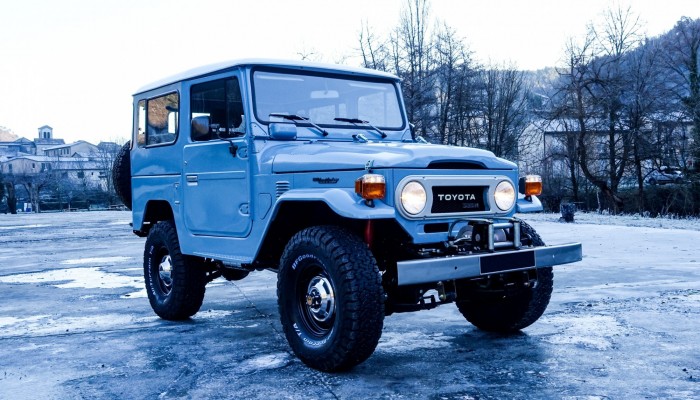
What truly distinguishes the Land Cruiser is its global support network. Toyota’s commitment to parts availability means that components for 30-40 year old models remain obtainable something nearly unheard of in the automotive industry.
This parts ecosystem has allowed Land Cruisers to remain in service in the most remote corners of the world, from the Australian Outback to the African savanna.
The design philosophy behind these vehicles emphasized mechanical sympathy and the ability to handle abuse while signaling to the driver when maintenance was needed before catastrophic failure.
This approach, combined with overbuilt components, means that with basic care, the powertrains often exceed 300,000 miles without a major overhaul. The Land Cruiser’s longevity isn’t just mechanical but cultural.
These vehicles have transcended transportation to become symbols of adventure and resilience. Their continued presence on roads and trails worldwide isn’t merely a testament to Toyota’s engineering prowess but to the special relationship, owners develop with vehicles that never let them down, no matter how challenging the circumstances.
2. Volvo 240 Series
The Volvo 240 represents Scandinavian pragmatism transformed into automotive form a vehicle so deliberately overbuilt that many examples continue to serve as daily transportation more than three decades after production.
Manufactured from 1974 to 1993, the boxy Volvo 240 has outlived countless more stylish contemporaries through a combination of straightforward engineering and robust construction.
At the heart of the 240’s longevity is its famously durable redblock engine, particularly the B230 variant. This four-cylinder powerplant was designed with substantial tolerances and a robust bottom end that, when properly maintained, routinely delivers hundreds of thousands of miles of service.
The engine compartment was intentionally designed with accessibility in mind, making maintenance straightforward even for owners with limited mechanical experience a sharp contrast to the cramped, complex engine bays of most modern vehicles.
The 240’s body structure was similarly forward-thinking. Well before crash safety became an industry focus, Volvo engineered the 240 with extensive crumple zones, reinforced passenger compartments, and side-impact protection.
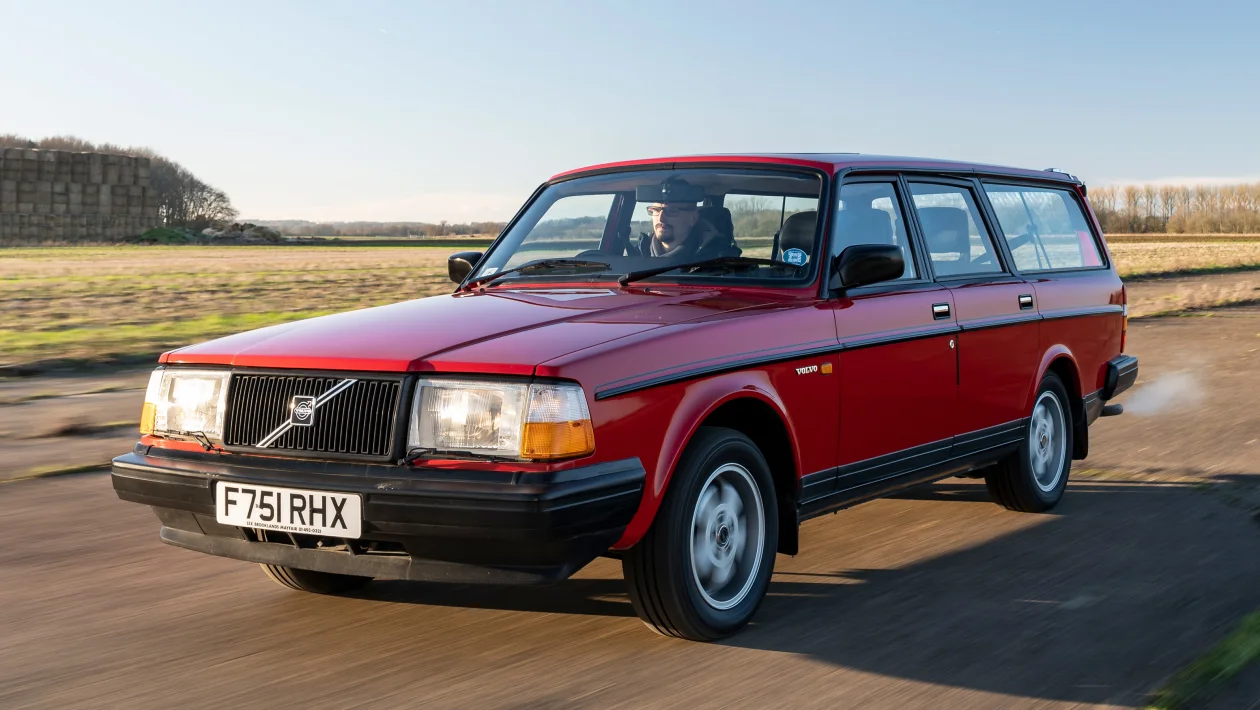
This emphasis on structural integrity had the secondary benefit of creating a body that resists the corrosion and deterioration that typically ends the service life of vehicles in harsh climates.
Beyond its mechanical attributes, the 240’s continued presence on roads stems from its practical nature. The spacious interior, excellent visibility, and functional cargo capacity make these three-decade-old vehicles remain practical daily drivers.
The straightforward dashboard layout devoid of complex electronics that often fail in aging vehicles means that critical functions rarely experience the obsolescence that sidelines many older cars.
The 240’s aesthetic has also played a role in its longevity. Initially criticized for its boxy, utilitarian appearance, this design has transcended trends to become timelessly distinctive.
As automotive design has cycled through various fashions, the 240’s honest functionality has gained appreciation among younger enthusiasts who value its unpretentious character and mechanical accessibility in an era of increasingly disposable consumer goods.
3. Mercedes-Benz W123
The Mercedes-Benz W123 series, produced from 1976 to 1985, represents what many consider the pinnacle of the company’s engineering ethos vehicles built without compromise to a standard rather than a price point.
Four decades after production ended, these elegant sedans, coupes, and wagons continue to serve as reliable transportation across the globe, earning them the informal title of “the world’s taxi.”
The W123’s exceptional longevity begins with its powertrain options, particularly the OM617 five-cylinder diesel engine. This powerplant was designed for commercial applications and then adapted for passenger cars, resulting in a unit that routinely accumulates 500,000 miles without major mechanical intervention.
The naturally aspirated diesel variants, while modest in performance by modern standards, were built with such precision and quality that they continue to operate efficiently decades later with basic maintenance.
Beyond the renowned engines, the W123’s survivability stems from Mercedes’ comprehensive approach to durability. Components that were merely adequate in contemporary vehicles were dramatically overbuilt in the W123.
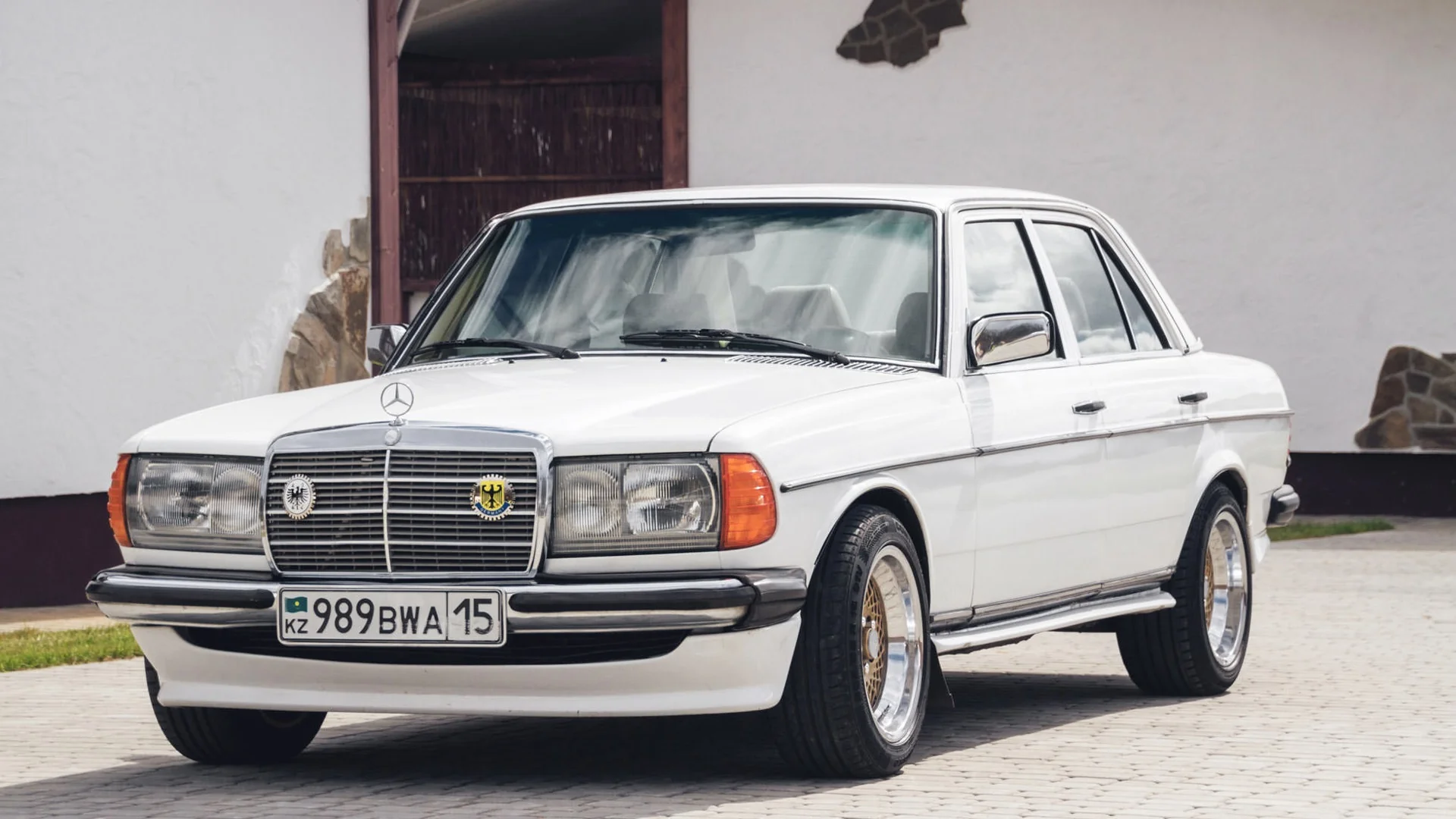
From the thickness of sheet metal to the quality of interior materials, every aspect was designed with longevity as a primary consideration. The electrical systems often the first failure point in aging vehicles were engineered with redundancy and quality components that resist degradation.
The model’s continued presence also owes much to its serviceability. Despite its sophisticated engineering, the W123 was designed during an era when owner maintenance was expected.
Systems were logically arranged, with accessible components and straightforward diagnostic procedures. Factory service manuals provided detailed procedures for nearly every repair, enabling owners to maintain these vehicles themselves or find competent independent specialists.
Perhaps most remarkably, the W123’s survival has transcended mere utility to become cultural. What began as premium executive transportation has evolved into an emblem of durability and timeless design.
Their continued presence on roads worldwide represents a different philosophy of consumption one where quality and longevity outweigh novelty and disposability.
For many owners, maintaining these vehicles isn’t just about transportation but about preserving engineering excellence from an era when planned obsolescence wasn’t part of the automotive equation.
4. Jeep Cherokee XJ
The Jeep Cherokee XJ (1984-2001) revolutionized the SUV market with its unibody construction and remains one of the most enduring designs in automotive history.
Nearly 40 years after its introduction, these distinctive vehicles continue to serve as daily drivers, weekend warriors, and modified off-road machines for a dedicated community of enthusiasts.
The XJ’s remarkable staying power begins with its legendary 4.0-liter inline-six engine. This powerplant, with its seven main bearings and torque-focused design, established a reputation for bulletproof reliability that few engines can match.
The simplicity of this engine using readily serviceable components with minimal electronics in early models means that even examples with astronomical mileage can be kept running with basic mechanical knowledge and modest investment. Many XJs have surpassed 300,000 miles on their original engines with only routine maintenance.
While the powertrain garners much attention, the XJ’s unibody design was equally revolutionary. Chief engineer Roy Lunn created a structure that was simultaneously lighter than traditional body-on-frame SUVs yet rigid enough for serious off-road use.
This fundamental engineering achievement delivered better fuel economy and on-road handling without sacrificing capability. The design has proven remarkably resistant to the structural fatigue that typically affects vehicles used in demanding conditions.
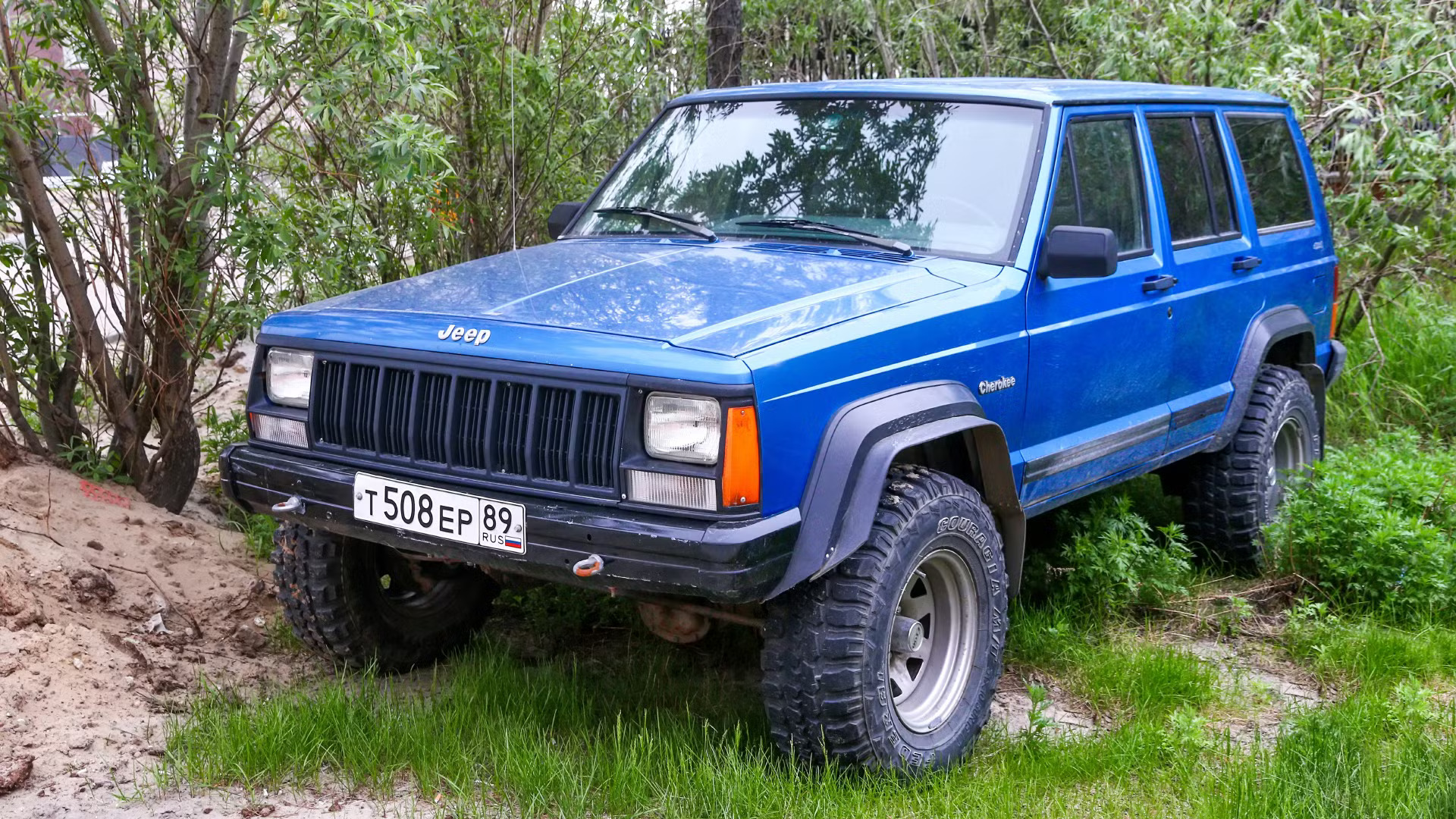
The XJ’s continued presence on roads and trails owes much to its massive aftermarket support. Few vehicles have inspired such a comprehensive ecosystem of replacement parts, performance upgrades, and restoration components.
This support network means that nearly every part needed to keep an XJ running remains readily available at a reasonable cost a crucial factor in any vehicle’s longevity.
What truly distinguishes the Cherokee from other long-lived vehicles is its versatility. The platform has proven adaptable to countless uses, from bone-stock daily commuters to wildly modified rock crawlers.
The straightforward design accommodates modifications with minimal complexity, allowing owners to continuously evolve their vehicles to meet changing needs. This adaptability has created a multi-generational ownership community, with XJs often passed down through families or finding new enthusiasts decades after manufacture.
The XJ Cherokee represents that rare intersection of utility, simplicity, capability, and character that creates not just a vehicle but a cultural touchstone.
Its continued presence on roads worldwide isn’t just about transportation but about preserving an approach to vehicle design that prioritizes function, repairability, and purpose above all else.
Also Read: 10 Pickup Trucks Ideal for DIYers and Handymen
5. Volkswagen Beetle (Air-cooled)
The original Volkswagen Beetle stands as perhaps the most recognizable vehicle silhouette in automotive history, with production spanning from 1938 to 2003.
While production for most markets ended decades ago, these distinctive vehicles continue to buzz along roads worldwide, supported by passionate owner communities and one of the most comprehensive aftermarket parts networks ever developed.
The Beetle’s extraordinary longevity begins with its fundamentally simple design. Dr. Ferdinand Porsche’s air-cooled, rear-engine layout eliminated many of the components that typically fail in conventional vehicles.
There’s no radiator to leak, no water pump to fail, and minimal electronics in earlier models. The horizontally opposed four-cylinder engine, while modest in output, was designed with accessibility and repairability as primary considerations.
Nearly every mechanical component can be serviced with basic tools and moderate mechanical knowledge a stark contrast to the specialized equipment required for modern vehicle maintenance.
Beyond mechanical simplicity, the Beetle’s monocoque construction proved remarkably durable. Unlike many contemporaries that utilized separate body-on-frame designs prone to structural degradation, the Beetle’s integrated body shell has demonstrated exceptional resistance to the flexing and fatigue that typically ends a vehicle’s useful life.
This fundamental engineering, combined with the ongoing reproduction of body panels, means that even severely deteriorated examples can be restored to roadworthy condition.

What truly distinguishes the Beetle from other long-lived vehicles is its cultural significance. Far beyond transportation, the Beetle became a canvas for personal expression and a symbol of counterculture values.
This cultural resonance transformed ownership from mere transportation into identity, creating multi-generational enthusiasm that ensures continued preservation. From meticulously restored showpieces to daily-driven survivors, Beetles occupy a unique position in automotive culture that transcends their utilitarian origins.
The global nature of the Beetle’s production further contributes to its persistence. With manufacturing spanning from Germany to Brazil and Mexico, regional variations developed distinct characteristics while maintaining the fundamental engineering.
This worldwide production created localized expertise and parts networks that continue to support the remaining fleet, regardless of where examples might roam today.
The Beetle’s continued presence on roads worldwide represents not just transportation but a philosophy of the notion that a vehicle designed with honesty of purpose and repairability as core values can transcend its intended lifespan to become something approaching immortal in automotive terms.
6. Honda Civic (Fourth and Fifth Generation)
The Honda Civic, particularly the fourth (1987-1991) and fifth (1992-1995) generations, represents Japanese engineering precision transformed into accessible transportation that refuses to quit.
These compact cars, designed during Honda’s engineering golden age, continue to serve as daily transportation three decades after production, often accumulating mileages that defy conventional automotive expectations.
At the heart of these Civics’ longevity are their remarkably engineered engines, particularly the D-series and B-series four-cylinders. These powerplants combined lightweight design with meticulous engineering tolerances and advanced material selection for the era.
The result was engines that not only delivered exceptional efficiency but demonstrated remarkable resistance to wear. The simplicity of these naturally aspirated, non-interference designs (in most variants) meant that even with minimal maintenance, catastrophic failure was rare.
Many examples continue to operate with original engine internals at mileages exceeding 300,000 miles a testament to Honda’s engineering philosophy during this period. Beyond the powertrains, these Civics benefited from Honda’s comprehensive approach to longevity.
Electrical systems were designed with high-quality connectors and logical routing that resisted the degradation that typically sidelines aging vehicles.
The manual transmissions, particularly the coveted 5-speeds, were overbuilt relative to the modest power outputs, resulting in gearboxes that often outlast multiple clutch replacements without internal attention.
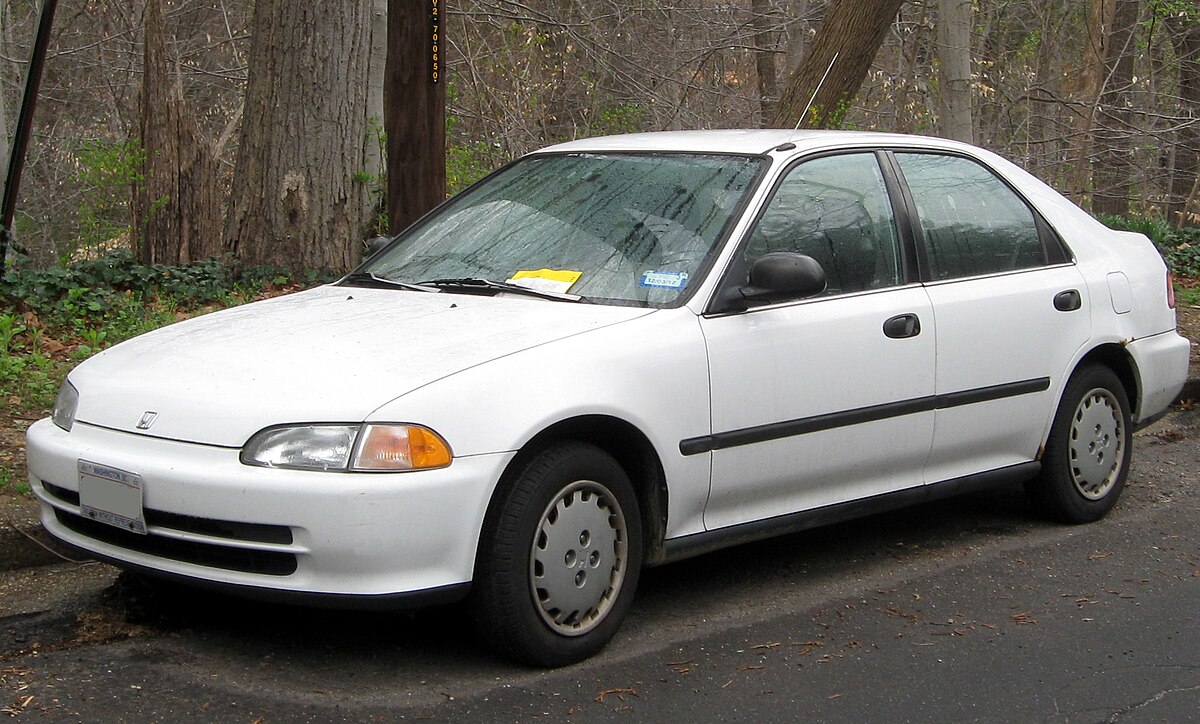
What sets these Civics apart from many contemporaries is their continued relevance. Unlike many vehicles that survive primarily as collector’s items, these Hondas remain practical daily transportation.
Their efficiency (regularly exceeding 35 mpg), space utilization, and fundamental reliability make them rational transportation choices even by modern standards. The simplicity of their systems lacking the complex electronics and multiplexed networks of modern vehicles means that diagnostics and repairs remain accessible to owners with modest mechanical skills.
The enthusiast community has played a crucial role in these Civics’ continued presence on roads. What began as economical transportation has evolved into a cultural phenomenon supported by one of the most comprehensive aftermarket parts networks in automotive history.
From restoration components to performance upgrades, nearly every part remains available either through Honda’s exceptional parts support or aftermarket suppliers.
These Civics represent a philosophy of automotive design focused on quality, efficiency, and user serviceability that continues to resonate decades after their introduction. Their continued presence on roads worldwide isn’t merely about transportation it’s about preserving vehicles that embody principles of engineering excellence accessible to ordinary people.
7. Ford F-Series (Seventh through Ninth Generation)
The Ford F-Series trucks from the 1980s and early 1990s represent American automotive engineering at its most enduring. Spanning the seventh (1980-1986), eighth (1987-1991), and ninth (1992-1996) generations, these trucks were built during an era when durability was a primary selling point rather than an afterthought.
Decades later, they remain fixtures on American roads, job sites, and farms often accumulating mileages that modern vehicles can only aspire to reach.
The bedrock of these trucks’ longevity lies in their powertrains, particularly the legendary 300 cubic inch (4.9L) inline-six and the 351 Windsor V8 engines.
The inline-six, often called the “300,” represents one of the most durable engines ever produced for mass-market vehicles. Its undersquare design, with a long stroke and seven main bearings, created an engine that delivered excellent low-end torque while operating unstressed even under heavy loads.
This fundamental engineering approach, combined with simple mechanical fuel delivery in earlier examples, resulted in powerplants that routinely exceed 300,000 miles with minimal attention beyond basic maintenance.
Beyond the engines, these F-Series trucks benefited from body-on-frame construction that was deliberately overbuilt for the expected loads. The separate frame design allowed the vehicle to absorb the twisting forces experienced during heavy use without transmitting those stresses to the body structure.
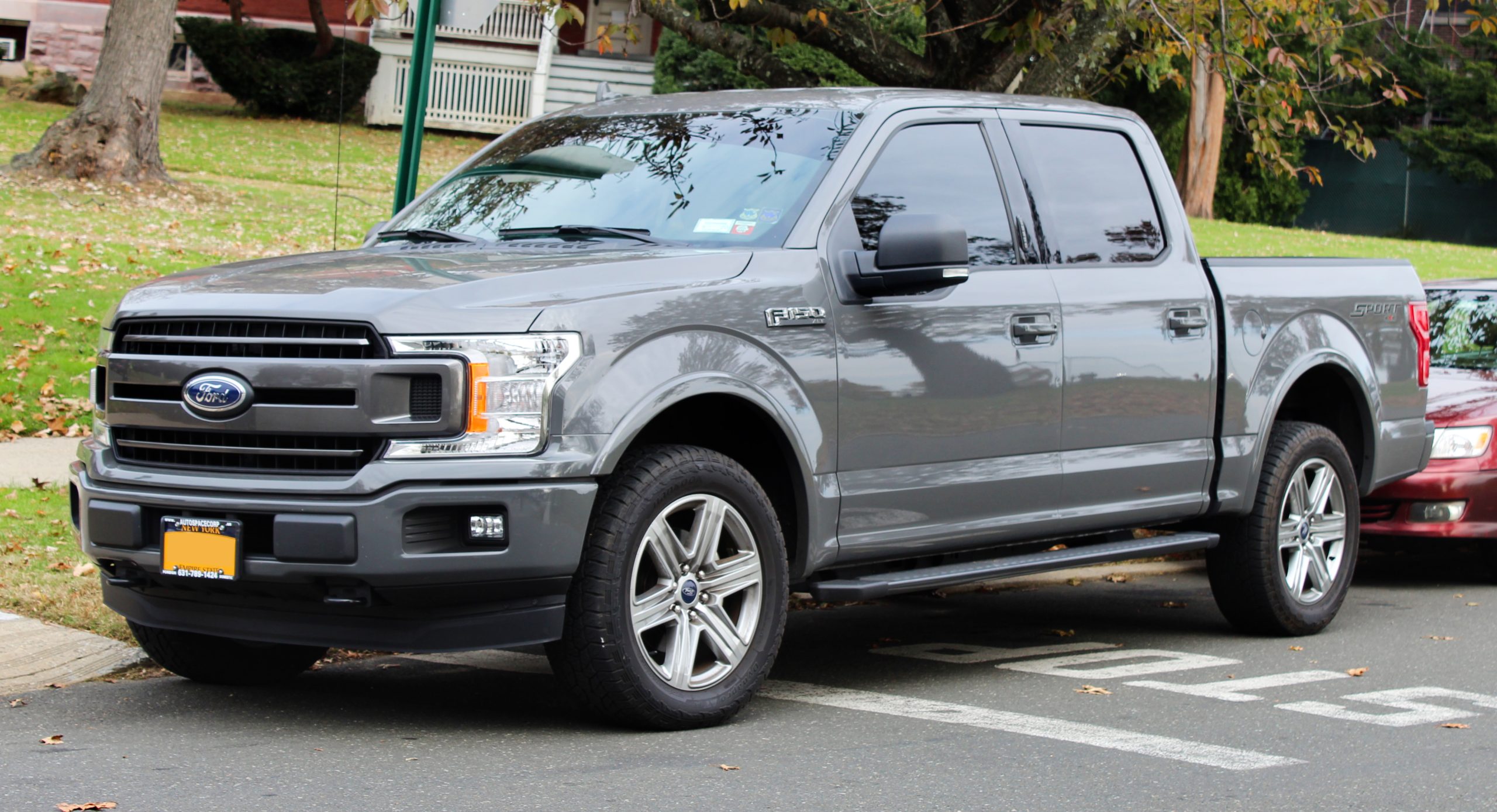
This engineering approach, while heavier than modern unibody designs, created vehicles that resist the structural fatigue that typically ends a truck’s useful life.
What distinguishes these F-Series generations is their repairability. Designed before the era of integrated systems and complex electronics, nearly every component was designed for straightforward service using basic tools.
The engine compartments featured a logical component layout with excellent accessibility, allowing owners to perform maintenance that would require specialized equipment on modern vehicles. This serviceable design philosophy extended to the rest of the vehicle, from suspension components to body panels.
The continued presence of these trucks on American roads owes much to Ford’s commitment to parts support and the vast aftermarket that developed around them.
Nearly every component remains available, either through Ford’s impressive parts network or through aftermarket suppliers. This part ecosystem means that even high-mileage examples can be economically maintained rather than discarded.
These F-Series trucks represent a distinctly American approach to vehicle durability overbuilt components, straightforward design, and an emphasis on longevity over cutting-edge technology. Their continued utility decades after production stands as a testament to engineering principles that prioritized functional lifespan over planned obsolescence.
8. Toyota Corolla (E80 and E90 Series)
The Toyota Corolla, particularly the E80 (1983-1987) and E90 (1987-1992) generations, exemplifies the principles of engineering conservatism and build quality that transformed Toyota from a minor player into the world’s largest automaker.
Three decades after production, these unassuming compact cars continue to serve as reliable daily transportation worldwide, often with odometer readings that modern vehicles rarely achieve.
At the core of these Corollas’ remarkable durability is Toyota’s approach to engine design during this era. The 4A series engines, particularly the fuel-injected 4A-FE variant, were built with engineering tolerances and material quality that far exceeded the requirements of their modest power outputs.
These naturally aspirated four-cylinders featured overbuilt bottom ends, well-designed cooling systems, and timing components designed for hundreds of thousands of miles of operation.
The result was powerplants that routinely exceed 300,000 miles without internal attention, provided basic maintenance schedules were followed. Beyond the engines, these Corollas benefited from Toyota’s comprehensive approach to vehicle longevity.
Electrical systems were designed with high-quality connectors and logical routing that resisted the degradation that typically affects aging vehicles.
Transmission options, particularly the manual five-speeds, were engineered with similar philosophies and components sized for loads far exceeding what they would experience in normal operation, resulting in exceptional lifespan.
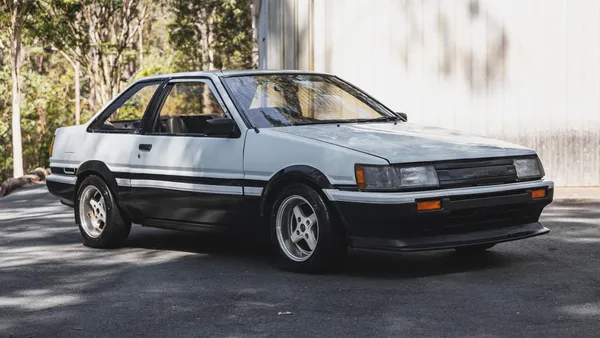
What distinguishes these Corollas from many long-lived contemporaries is their continued practicality. Unlike vehicles preserved primarily for nostalgic or collector value, these Toyotas remain rational transportation choices even by modern standards.
Their combination of excellent fuel efficiency (regularly exceeding 35 mpg), reasonable comfort, and fundamental reliability makes them economically viable daily drivers decades after their design.
The simplicity of their systems lacking the complex electronics and interlinked networks of modern vehicles means that diagnostics and repairs remain accessible to owners with modest mechanical skills.
Toyota’s exceptional parts support has played a crucial role in these Corollas’ longevity. The company’s commitment to supporting older models means that many components remain available through dealer networks worldwide.
This parts availability, combined with the vehicles’ global production volumes, ensures that maintenance remains economically viable long after most contemporaries have been consigned to scrapyards.
These Corollas represent automotive engineering focused on quality, efficiency, and long-term reliability rather than cutting-edge technology or flashy features. Their continued presence on roads worldwide isn’t just about transportation it’s about preserving examples of design philosophy where durability was a primary consideration rather than a marketing claim.
9. BMW E30 3-Series
The BMW E30 3-Series (1982-1994) stands as one of the most enduring driver’s cars ever produced, with examples continuing to provide spirited transportation three decades after leaving Munich’s production lines.
Unlike many vehicles on this list that survive through pure utility, the E30’s longevity stems from its perfect balance of engaging driving dynamics, reasonable maintenance requirements, and timeless design that continues to attract new generations of enthusiasts.
The mechanical foundation of the E30’s durability begins with its inline engines, particularly the M20 six-cylinder variants. These powerplants combine smooth operation with robust construction and reasonable complexity.
While not immune to issues (timing belt maintenance being critical), these engines were designed with serviceability in mind and responded well to preventive maintenance. The fundamental design avoided the excessive complexity that has rendered many modern performance engines disposable after moderate mileage.
Beyond the engines, the E30 benefited from BMW’s comprehensive engineering approach during this period. The five-speed Getrag manual transmissions, particularly, were overbuilt relative to the engines’ power outputs, resulting in gearboxes that often exceeded 250,000 miles without internal attention.
The rear-wheel-drive platform featured straightforward suspension geometry that not only delivered exceptional handling but remained serviceable with basic tools and moderate mechanical knowledge.
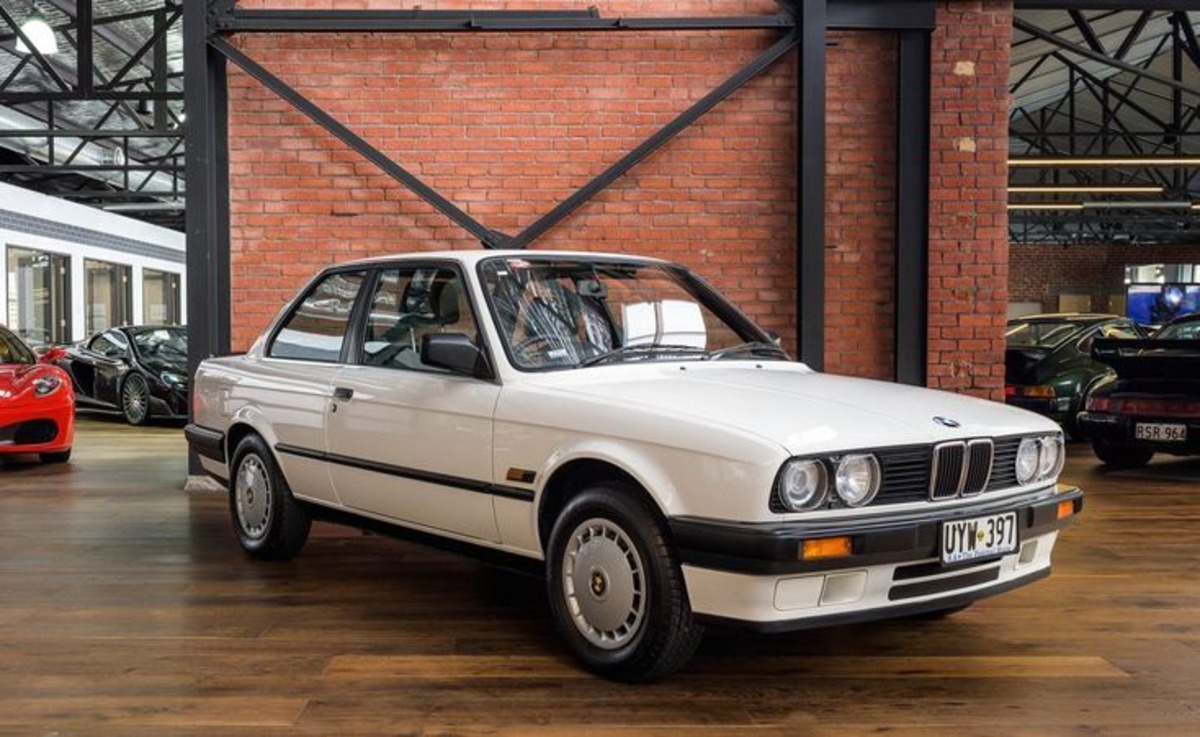
What truly distinguishes the E30 from its contemporaries is its driving experience. The combination of perfect weight distribution, responsive naturally-aspirated engines, and communicative steering created a driving character that modern vehicles, despite massive technological advances, struggle to replicate.
This fundamental appeal has transformed what began as premium sports sedans into cherished driver’s machines that owners are willing to invest in maintaining far beyond economic rationality.
The E30’s continued presence also owes much to BMW’s parts support and a thriving aftermarket. The company’s commitment to supporting heritage models means that many components remain available through dealer networks, while specialist suppliers have filled gaps in the ecosystem.
This parts availability, combined with the model’s popularity, ensures that maintenance remains viable despite the vehicles’ age. Perhaps most remarkably, the E30 has transcended its original market positioning to become a cultural touchstone.
What began as executive transportation has evolved into an enthusiast icon that continues to influence automotive design and attract passionate owners. For many, these vehicles represent the perfect synthesis of analog driving engagement, reasonable practicality, and distinctive design that remains relevant decades after introduction.
10. Mercedes-Benz G-Class (W463)
The Mercedes-Benz G-Class stands as an automotive anomaly a vehicle conceptualized in the 1970s as a military utility vehicle that has evolved into both a luxury status symbol and a genuine off-road icon that refuses to go out of production.
The first-generation W463 series, introduced in 1990 and fundamentally unchanged until 2018, represents one of the longest production runs of any modern vehicle. Early examples, now more than three decades old, continue to roam both urban streets and remote wilderness areas with equal authority.
The G-Class’s remarkable longevity begins with its purpose-built design philosophy. Unlike most vehicles that make compromises for mass-market appeal, the G-Wagen was engineered with extreme durability as a foundational requirement.
Its fully boxed ladder frame, constructed of thicker steel than most contemporaries, provides exceptional resistance to the torsional stresses that typically lead to structural fatigue in aging vehicles.
This fundamental overengineering extends to nearly every system from the three locking differentials to the body panels mounted on flexible mounts that absorb impacts rather than transmitting them to the frame.
The powertrains, particularly the inline-six diesel variants and naturally aspirated gasoline engines of early models were selected for reliability rather than outright performance.
These engines, while modest by modern standards, were deliberately understressed in the G-Class application, allowing them to operate well below their design limitations even under severe conditions.
This engineering approach, combined with Mercedes’ quality standards of the era, resulted in powerplants that routinely exceed 300,000 miles with basic maintenance.
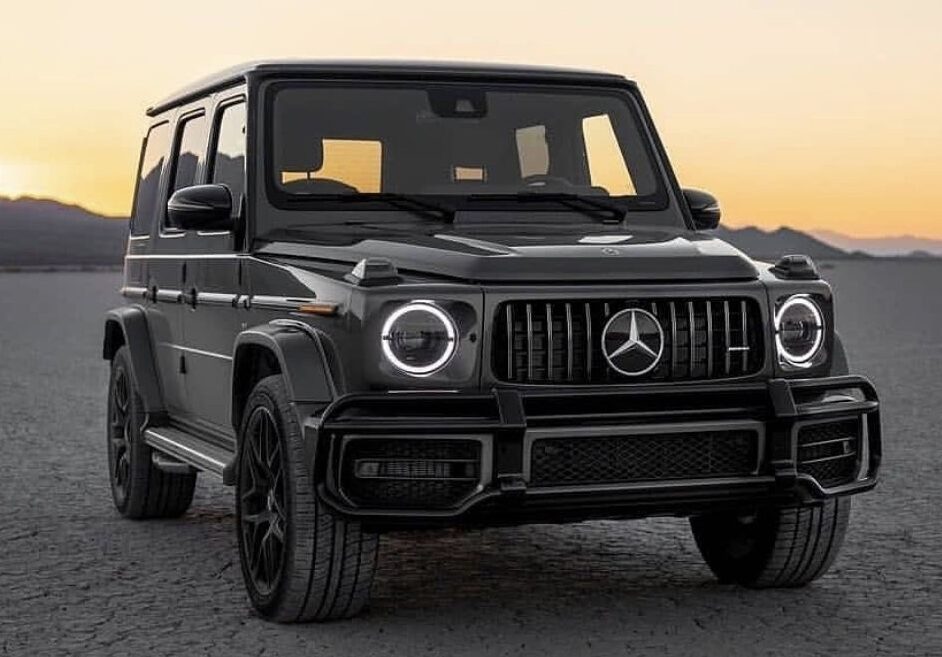
What distinguishes the G-Class from many long-lived utility vehicles is its dual nature. While technically capable of extreme off-road performance, many examples have been preserved through luxurious urban use, creating a unique ecosystem where both trail-worn workhorses and pristine collection pieces contribute to the model’s continued presence.
Mercedes-Benz’s exceptional parts support, maintaining the availability of components for decades-old examples, ensures that both use cases remain viable despite the vehicles’ age. The G-Class’s continued relevance owes much to its distinctive design that has transcended trends to become iconic.
The boxy silhouette, externally mounted spare tire, and prominent door hinges create an instantly recognizable profile that has attracted multiple generations of enthusiasts.
This timeless design language has allowed the G-Wagen to avoid the stylistic obsolescence that typically relegates aging vehicles to enthusiast ownership rather than mainstream use.
The original W463 G-Class represents a philosophy of vehicle design rarely seen in the modern era one where purpose-driven engineering and durability take precedence over fashion or efficiency. Its continued presence on roads worldwide stands as a testament to the enduring appeal of vehicles built to outlast trends rather than follow them.
Also Read: 10 Reliable Cars for People Who Commute 100+ Miles Daily

